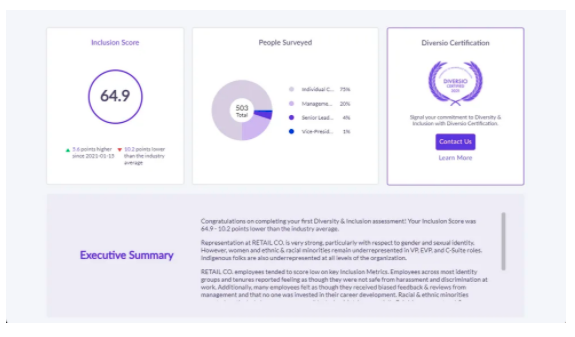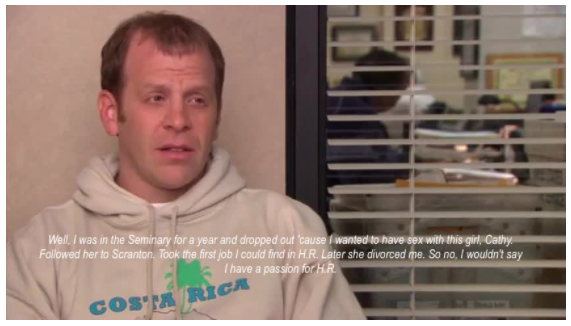
For some time, I’ve been looking for one “source” that curates modern takes on HR Tech, perspectives from the people who build it, and its impact on enterprise — something that’s tailor-made by professionals for decision-makers.
I never found it — so I decided to build it.
Every week, I’ll be sharing fresh insights on tech platforms, design, data, and the future of work — straight to your inbox.
My Thoughts
This week, The Changing Workplace will feature the next in our series of thought pieces. HR leaders have spent the past two years trying to manage talent shortages within their organizations, but there’s also a shortage coming from inside the house. For years, an HR talent deficit has been looming, and we need to start finding solutions now. Join me in exploring how we can attract the next generation of People Operations talent, and what people are doing now to change the way young people see the industry.
Market Moves
Mentor Collective, a digital mentorship program for both companies and colleges, announced a $21 million Series A funding round 💸 💸 this week, led by Resolve Growth Partners. Earlier this month, Y Combinator alumni Together raised the US equivalent of $5 million. And in December, MentorcliQ announced it had reached over $11 million in funding. In total, the 2o21 global mentoring software market size was estimated to be just shy of $450 million. 📈
Now that I’ve brought it up, the driving force behind this market’s growth is probably obvious. In an office, it’s easy for new hires to meet a few close colleagues from whom they feel comfortable seeking advice and additional guidance as they grow into an organization. 👩💼 👩💻 But remote work has made it radically more difficult for both formal and informal mentorships. Regardless, the ability to grow, learn, and advance at work is crucial to employee morale, positive workplace culture, and innovation, especially for women. Amidst the Great Resignation,👋 👨💼💨 it can also be the difference between keeping and losing talent. As a result, companies are turning to innovative solutions for facilitating effective mentorship programs in a distributed team.
Are you offering mentorship opportunities 🙇 👨💼 within your organization? If not, check out these resources from Together for tips on establishing an effective program.
Tech Innovation at Work
As organizations continue to struggle with effective solutions for DEI, the role of artificial intelligence in people operations has begun to expand beyond hiring and into improving workplace culture. Diversio, a PaaS startup that recently raised $6.5 million in its first funding round, is already demonstrating promising solutions. The platform uses artificial intelligence 🤖 🧠 as well as a proprietary natural language processor to turn open-ended employee pulse surveys into quantifiable and, most importantly, actionable results — supposedly with up to 90% accuracy. Diversio’s primary goal is to help organizations identify “inclusion pain points” 🤕 that drive problems with behavior or working conditions. Once survey results are finalized, the platform’s AI can also recommend changes for companies to implement, which can be assessed for efficacy with follow-up pulse surveys. Diversio’s overarching vision is to create a centralized database that organizations can easily use to guide each step of their DEI journey. 💪

Elaborating on their 2021 research into organizational agility, the latest from McKinsey offers recollections and recommendations from CIOs on leading successful agile change in 2022. Here are the key takeaways:
- The word of the day is microservices: 🤏 As in, the exact opposite of a monolithic core IT system. Granular applications and services are the most effective way to keep up with the trends and needs of both your organization and customers.
- Start small and start now: 🏃Transitioning out of a deeply-entrenched core IT system is arduous and complex, which is why it poses a large risk to do all at once. Start the process by ensuring every member of the leadership team understands how agility within the organization will create value. This will provide direction and strategic trade-offs throughout the process.
- Anticipate the learning curve: 🙋 No matter how incremental, these changes will undoubtedly lead to some confusion. My personal advice for handling this type of challenge is to sell internal software to your employees the same way you would to a customer. Show them the benefits, not just the buttons.
- Agility brings a sense of digital maturity and inspires innovation: 👍 If you do it right, adopting new technology is like dusting off the cobwebs. It sparks new ideas; employees and leaders have more resources. And it creates better experiences for your team and your customers.
Or, you can read the full article here.
The Changing Workplace

Let’s face it: HR isn’t generally thought of as a “cool” job. 😬 When elementary schoolers are asked what they want to be when they grow up, you won’t find many that say “strategic people operations manager” (although to be fair, it is quite the mouthful). Along with the workers’ compensation, insurance, and accounting sectors, HR is struggling to recruit the next generation of talent, teeing up the industry for a major talent crisis. 💣 💣 💣
What exactly is going on? Research from HR software company Sage People leads me to believe the issue is two-fold. ✌️ First, there has been a years-long global 🌍 deficit of young people entering the sector. And, more recently, the skills required to succeed in the new world of work has left a significant percentage of current professionals struggling in the field. 😰
We spend a lot of time discussing the digital transformation of human resources and talent management. Today, I want to focus on the the first issue: the talent deficit.
So, why exactly are younger generations turning their backs on such a rewarding and, frankly, lucrative field? 🤔 We need to consider the “brand” of human resources. In pop culture, the industry as a whole has been embodied by less-than-desirable characters, the most prevalent arguably being Toby Flenderson from The Office, a show both Gen Z and Millennials adore. 💼 💓 For nine seasons, millions of people have watched Toby be mercilessly berated, ignored, and overruled by both employees and bosses alike. 💀 If not Toby, then HR is represented by a Karen or Linda or Carol or some other [disproportionately female] character who is at best uninvolved, and at worst, well, the worst. (If the topic of negative HR archetypes in the film and TV industry interest you, check out this episode of the HR-focused podcast, PCTY Talks). 🎤
Human Resources has developed a bad reputation, and we’re now faced with the challenge of undoing damaging misconceptions swaying younger workers away from a great career.
Fortunately, HR has been one of the few job functions to reap any benefits from the pandemic. As leaders look to us to help retain talent, HR has a seat at the table. 🙇 💻 We are no longer powerless Tobys or outdated Lindas. 🙌 Unfortunately, though, the next generation doesn’t see that yet.
How do we turn the tide? 🌊 Well, the first step is changing the face of HR into one that Gen Z and Millennials can relate to. And there are some leaders doing phenomenal work on this front already. Leigh Elena Henderson of HR Manifesto, for example, is a corporate veteran-turned social media maven. 💯📱 She’s built a powerful following with her HR-themed videos offering both employer and employee perspectives on the workplace. Leigh and dozens like her are meeting the next generation where they are, which, in this case, is TikTok. And honestly, she’s making HR look like a blast. 😀 🎉 She’s currently in the process of writing her first book, which I look forward to reading. 📖
Of course, it’s not all about virality. Attracting the next generation of HR professionals will require long-term organizational change.
Modern and innovative recruiting strategies are going to be crucial for reaching candidates. For a lot of organizations, this circles back to reaching them through increased social media presence. 📱 💃 Sage People reports that one third of companies are already looking outside the traditional HR candidate profile, 👤 instead recruiting from unconventional fields like behavioral science and marketing to fill their talent gap and drive innovation.
When prospects become candidates, demonstrating modern organizational agility is key. 🔑 You have a better chance at recruiting top talent if a candidate sees that your organization prioritizes effective HR operations, starting with experiential applicant journeys 🗺️ (and ending never).
Finally, once candidates become employees, the key to keeping them is, as with all workers, providing purpose, engagement, and advancement. By leveraging digital transformation, organizations can streamline processes and support opportunities for employees to be creative and feel fulfilled in their work. 🙂 Digital adoption of tools like internal talent marketplaces are the final element, as they’ll help you and your new HR professionals find opportunities for growth and upskilling. ↗️ ↗️
All About Data
Now that the dust has settled and remote work remains an unwavering expectation from workers, the subject of employee monitoring is resurfacing. 🖥️ 🕵️ Personally, I am completely against all forms of employee surveillance. It’s been demonstrated a hundred times over that such practices dramatically damage employee morale, which is directly linked to overall business performance. A lose-lose, with an additional loss if you consider resignations over the matter.
But if you don’t want to take my word for it, here are some stats from ExpressVPN’s survey on employee surveillance:
Prevalence
Of the 2,000 employers surveyed:
- 57% report implementing monitoring software in the last six months, bringing the total to 78%. 😳
- 73% of those who monitor employees have used recorded calls, emails, or messages in performance reviews. 🗒️
- 94% of those who monitor employees include email, most prevalent channel. 📨
- 90% of those who monitor use monitoring software to actively track time employees spend doing work vs. non-work activities. ⏱️
Perception
Of the 2,000 employees surveyed:
- 1 in 6 weren’t aware that it was possible for employers to monitor their communications online.
- 59% report feeling stress or anxiety about their employer surveilling their online activity 😩
- 41% of these people are preoccupied with the constant uncertainty of whether they’re being watched. 😰
There’s an emotional toll, too:
- 43% feel that it’s a violation of trust 😕
- 28% say it makes them feel unappreciated 😤
- 26% report harboring resentment over it 😡
Performance
Here are some of the negative impacts that employees report as a result of employee surveillance:
- 38% feel more pressure to be actively online than to do actual productive work 👨💻
- 32% feel pressured to take fewer breaks 👎
- 36% feel pressured to work longer hours 👎 👎 👎
- 25% of employees surveyed admit to researching hacks to fake online activity, assumably instead of doing productive work. 😅
Plus:
- 54% of employees surveyed say they’d be likely to quit over surveillance measures.
- 25% of employees were willing to cut their pay by 25% or more.
The bottom line? As long as work is getting done, I’d highly encourage you not worry about what your employees are doing every moment of the work day.
Editor’s Picks
- Speaking of TikTok and Gen Z, here’s an interview with a young hotshot rocketing a once-mediocre language-learning company to stardom.
- There’s a new bill that could require websites to make disclaimers readable.
- Activision employees have announced plans to unionize
Click here to subscribe to Exit Interview, a weekly email about tech platforms, design, data, and the future of work — straight to your inbox.

